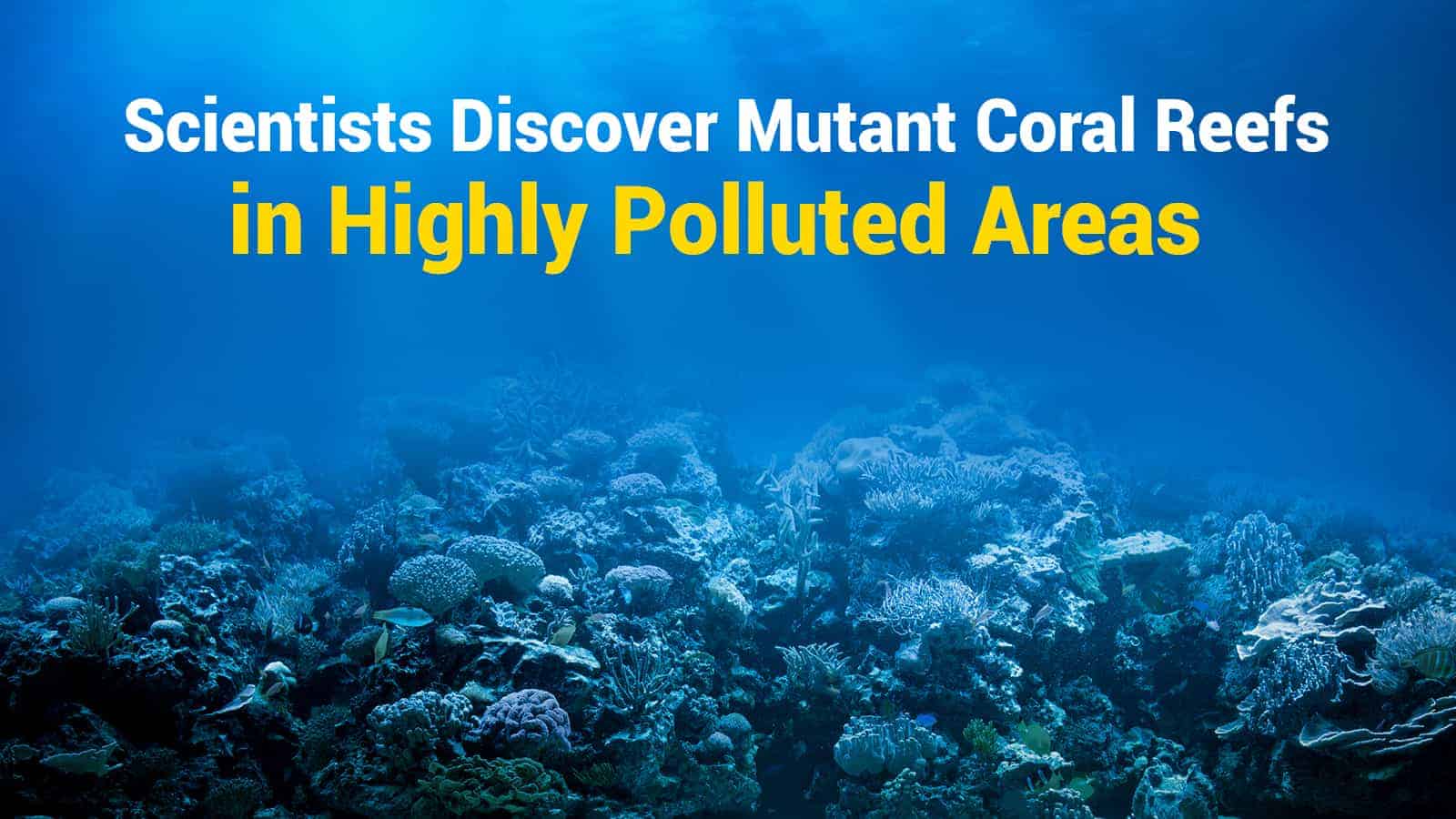Scientists recently discovered an area of ‘super corals’ growing in unlikely conditions. Normally, corals begin bleaching when exposed to extreme heat. However, a UT Austin hydrology professor found coral reefs thriving despite high carbon dioxide levels in the Philippines. This is encouraging news and warrants further investigation. Bayani Cardenas, the UT Austin professor, first made the discovery in 2019 during a research trip. On the journey, he intended to identify harmful nutrients flowing through groundwater into a coral reef in the Philippines. He completed the mission, but he also made an unexpected finding beneath the surface. He found a region of resilient ‘super corals’ seemingly unaffected by high levels of carbon dioxide. Instead of bleaching or dying, they adapted to the conditions and grew back. The research, based on the 2019 discovery, was published in August in the journal ACS ES&T Water. For the first time, the UT professor and a team of international scientists found that groundwater caused rising CO2 levels near the super corals. They also attributed other gases and nutrients in the seawater to groundwater runoff. This discovery highlights the vulnerability of coral reefs and the need for better management of wastewater. Agricultural runoff and other byproducts have previously been shown to harm marine life and ecosystems. “This is an unseen vulnerability,” said Cardenas, a professor in the Department of Geological Sciences at the UT Jackson School of Geosciences. “We’ve been able to show with this site that groundwater is part of these delicate coral reef environments. There is a connection, and that’s still not as accepted in science and in many parts of the world.”
Scientists Discover Super Corals in Highly Polluted Areas
Cardenas said the findings have also led to more questions and research ideas about the super corals. They hope to reproduce the study in other locations around the globe as CO2 levels continue to climb. Scientists have already observed the destruction of coral reefs around the world due to climate change. From 2014 to 2017, 75% of Earth’s coral reefs experienced heat stress. The unprecedented global coral bleaching event killed 30% of the species. However, the coral reefs in the Verde Islands Passage in the Philippines seemed to have the opposite response. There, Cardenas and his team discovered a coral reef so diverse and alive, they deemed it the “Amazon of the ocean.” The reefs thrived despite the high carbon dioxide levels entering into the groundwater. Lead author Rogger E. Correa, a researcher at Southern Cross University in Australia, estimated the CO2 levels flowing through groundwater into the researched area. He said nearly 989 grams of CO2 per square meter annually reached the “Twin Rocks,” an area adjacent to a volcano chain. Imagine two parked cars on the ocean floor emitting carbon dioxide for one year directly onto the corals. That’s how much CO2 is being pumped into the area, yet the reefs show no signs of distress.About the Study of Super Corals
To differentiate the groundwater from seawater, the scientists deployed devices to measure CO2 levels near the super corals. They also measured radon 222, a naturally occurring radioactive isotope found in local groundwater but not in oceans. Co-author Isaac Santos, a professor at the University of Gothenburg in Sweden, created the measurement technique. The study builds upon a previous 2020 study conducted by Cardenas. In the prior research, he found CO2 bubbling up from the seafloor off an area of the Philippine coast he called “Soda Springs.” Cardenas said in regards to the latest findings, the unexpectedly resilient coral reefs warrant further investigation. However, Adina Paytan, a research scientist at the Institute of Marine Sciences at the University of California, warned other human activities still threaten coral reefs. Sedimentation, pollution, overfishing and acidification pose significant risks to corals worldwide. However, Paytan says that Cardenas’ finding about the super corals “provides some hope for the future of corals.” She did not take part in the study. Study co-authors included researchers from the Leibniz Centre for Tropical Marine Research (ZMT) in Germany; the State Office for Mining, Energy and Geology in Germany; and the following institutions in the Philippines: Ateneo de Manila University, Agricultural Sustainability Initiatives for Nature Inc., and Planet Dive Resort.
Other Ways Climate Change Impacts Coral Reefs
Hopefully, scientists will discover other coral reefs that can adapt to high CO2 like the super corals in the Philippines. However, the discovery is likely an outlier in regards to the effects of climate change on corals. Here are just some of the threats coral reefs face from a changing climate:
- Warming oceans cause heat stress that contributes to infectious diseases in addition to bleaching.
- Sea level rise increases sedimentation near reefs, which can smother coral.
- Stronger, more frequent hurricanes and tropical storms can destroy coral reefs.
- Higher rainfall totals lead to increased runoff of freshwater, sediment, and land-based pollutants, which cause algal blooms, reduced light, and murkier water.
- Changes in ocean currents lead to temperature fluctuations, which decrease the food supply for corals.
- Ocean acidification reduces pH levels which decrease coral growth and durability.
Oceans absorb around 48% of fossil fuel emissions, making them the world’s largest carbon sink. While this helps slow global warming, it also makes the oceans increasingly unhealthy and unable to support life. Some scientists believe 90% of coral reefs worldwide will experience annual severe bleaching by 2055. The super coral study by UT researchers provides encouragement for the future. However, whether other corals respond positively to higher CO2 levels remains to be seen.
Final Thoughts: Scientists Find Super Coral Reefs Thriving in High CO2 Areas
Most scientists thought coral reefs undergo severe bleaching in the presence of high carbon dioxide. However, a study by a UT professor and international researchers found thriving super corals in the Philippine waters. In this region, groundwater with high carbon dioxide levels regularly flows into the reefs. Despite this, the corals teemed with life and showed incredible resilience. Scientists will perform more studies in the future, hopefully in other coral reefs, to gain more insight into this phenomenon. In the meantime, it’s still crucial for world governments to reduce greenhouse gas emissions and work to combat climate change.



















